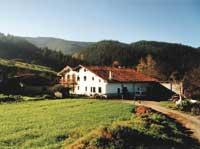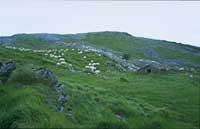What is traditional Basque agriculture?
1997/12/01 Bengoa Ansa, Aitor Iturria: Elhuyar aldizkaria
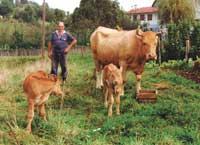
XXI. It is difficult to predict what the 20th century agricultural model will be in a changing activity, subject to technologies, science and political decisions. In any case, it is clear that the decisions taken now will condition the agriculture of the future and, therefore, it is a sector to be followed with special attention. Because we have to keep in mind that what is at stake is not only the future of our baserritarras, but the culture of a people and a way of life.
Old news
This fragment in the Peasants' Guide, written by Pierre Etcheverry, can serve to realize that many of the current problems are old: “Situation of farmers: There are so many laughs that on the banks have worked very well and that not everything is worth too much; it is done to me because the corners are emptied and the cities have been perpetuated; the employees are growing. The peasant does not see with good eyes that he cannot marry his son, not even in the march, a good crop, because many young girls prefer the yaunskila tcharrena to which he is a farmer. All these things are true and will be a kind of bethi, in which the life forms of the husbandmen are so humble. The day of Orai all the chasquidos yende are lived more wholesale; the yacht is better; the yostets are wanted; the pinch gives greed; the pinch creates hours that were not needed before; the school also makes many things lost. What better is leash or worse?”
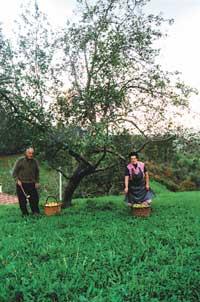
We say that there have been great transformations in agriculture, but it is surprising to see that this previous episode was written in 1922 and that some of the things that are said in it today are maintained, especially in relation to the relations between citizens and the Baserritarras. Despite the fact that much has been written and spoken about agriculture and hamlets, the Baserritarras have not yet received the true respect they deserve from the street vendors. Many times we have conceptions full of bad prejudices for good and evil, and the real essence of this task is not known.
To understand the current and future agriculture it is essential to know some of the anecdotes of the first agriculture. During the 60s and 70s many of the hamlets went down to work in the cities, but in many cases, despite working in factories, they continued to live in the hamlet. As a result, pine plants were modified in many lands and the work of the hamlet was accelerated. The children of the Baserritarras of that time went down to the city, so the average age of the Baserritarras of today is high. Many of the polygons that were built at that time took the best land for agriculture and this problem has remained so far. In fact, the plains, industry and urban centers of most of the valleys of the Basque Country have been covered by the plains, and farmers have been sent to the steepest places upstream of the valley.
But not everything was to the detriment, the shortage of labor caused great technological transformations and the increase of production in the hamlets. Thus, in Gipuzkoa and Bizkaia, in 1960 there were 47 motocultores and in 1972, 2,698. In short, in the 1960s and 70s, from the artisanal agricultural structure it was forced to plunge into the capitalist system, and until then farmers abandoned many of the food they produced for the home and began to produce the most demanded food on the market.
On the other hand, at this time there was another remarkable phenomenon. When many householders who worked only in the hamlet went to work, many farms in the hamlet remained and more than one author mentions the work done by the woman at that time. In this situation, the work of the woman was intensified and some of the functions of the hamlet were maintained.
Problems everywhere
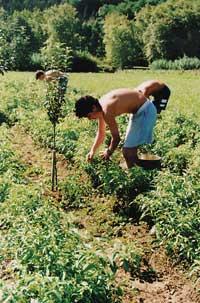
These phenomena that occurred in the 1960s and 1970s have largely structured current agriculture. The lands appropriate to carry out and implement the technological innovations that appear in agriculture are increasingly scarce and therefore tend to increase production on the same surface. Two problems that come from the hand: the lack of land and its intensification.
The problem of landlessness is a problem reiterated by the agrarian unions. For example, the EHNE union considers that in our society urban infrastructures have a clear priority on agricultural soils. And not only for the land acquired in construction. Industrial estates, pipelines, highways and new roads also cover agricultural land. Consequently, in this small and abrupt Basque Country, agricultural land is being reduced, which alone are scarce. Therefore, during the elaboration of the Land Ordinations, farmers have requested that they be given the importance that agrarian soils currently do not have.
The other problem mentioned above is that of intensification. Most of the land that is exploited in these areas is usually small, so these small surfaces are required to perform more. For this it is necessary to provide energy from the outside to these lands, that is, fertilize. In many cases, these levels of intensification are not profitable and, in most cases, these lands are destroyed and cause environmental damage.
In the days on de-intensification organized by the EHNE union in September 1997, proposals were launched as the need to reorient agricultural research. Most agricultural research focuses on techniques to increase production, and perhaps it would be more appropriate if these research focused on improving food quality. On the other hand, it was considered necessary to establish a correlation between production costs and prices when designing price policies.
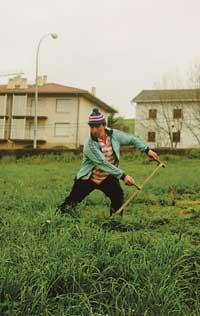
Another novel element that has appeared in mountain agriculture in recent years has been tourism. You can't say that tourism is a problem, but I thought it would be a source of money to use carefully. The ENBA union has a clear opinion on this. According to: “Agrotourism is a complementary activity to income, so rural tourism should be based on the baserritarras. These complementary activities would be of great interest to the distribution of work in the company and, in most cases, would be very suitable for women and young people, who have their own work”.
The road is made walking
We are used to seeing and hearing in the media the demands and complaints of farmers. It is often difficult for us to understand these cracks. In fact, many of the basic political decisions adopted in agriculture are of great importance in the future of small and large farmhouses. Many decisions, although adopted in Europe, have for many a notable influence, perhaps more than in other labor sectors.
It is known that the European Common Agrarian Policy (CAP/CAP) has generated many headaches in Basque farmers. In the elaboration of the CAP, the national interests of European States have often stood above the interests of the community, so some agricultural sub-sectors and in turn some regions have been greatly affected by these decisions.
The quality agriculture that is wanted to promote in Euskal Herria is in many cases with general and remote European regulations. In the neighboring local market, the farmer who sells quality products does not seem very fair to establish a free market policy based on European production indices.
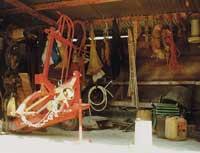
In any case, the European CAP has evolved and evolved, despising its initial experimental tone and making it increasingly pragmatic. The development programmes of regions 5b emerged from this path. By creating all kinds of infrastructure and services in the small mountain villages, the aim was to make the traditional agriculture of the area viable. These measures also provide the means for these peoples to remain peoples. In fact, most of the municipalities that are part of the 5b have suffered in recent years a notable reduction in their population.
The 5b programme, designed for the period 1994-1999, has a budget of 2.6 billion euros in the ACBC. Most Basque agricultural regions receive these funds.
However, closer to Europe, we have tools that will condition the agriculture of the future. One of them is the recently approved Rural Strategic Plan (1997-2000). The most remarkable novelty that this planning has entailed can be very representative to strengthen the agricultural guidelines of the future. In fact, this Rural Strategic Plan has assumed and internalized the multifunctional role played by the agricultural regions. That is, until now agriculture has been planned as one more economic sector. On this occasion, in addition to the economic function of the hamlet, it has been recognized an ecological and socio-cultural function that has determined its development. The planning has announced a total budget of 182 billion.
The main actions planned to develop this economic function have focused on food quality. For Basque agriculture to have a future, it is the most important part to be dealt with.
On the other hand, specific programmes have been planned for the incorporation of women and young people into agricultural activity. Today's farmers, on average, are too old to renew and move the sector forward and the need for young people has been detected.
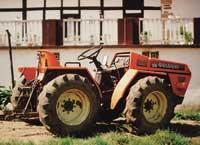
To guarantee the ecological function recognized to the hamlet, it has been committed to the conservation of agro-diversity. On the other hand, the General Plan of Rural Area refers to the attempt to reconcile environmental education, leisure and development in the rural environment, through an adequate planning of the territory. In the same line, this new planning poses the need to protect, in addition to the current protected spaces, other 46 spaces.
Finally, the focus of the socio-cultural function has been on improving the quality of life of rural inhabitants, among many other projects.
This General Plan of Agriculture received the approval of most social and economic representatives of the rural world. Now the most difficult thing is to do what is written on paper.
Thinking about the cold, Basque agriculture will need all these projects, plans and reflections. And it is that, without the intention of being pessimistic, we believe that agriculture will come out in one way or another, but almost until now we have known a bucolic hamlet that we could consider disappeared.

Gai honi buruzko eduki gehiago
Elhuyarrek garatutako teknologia




